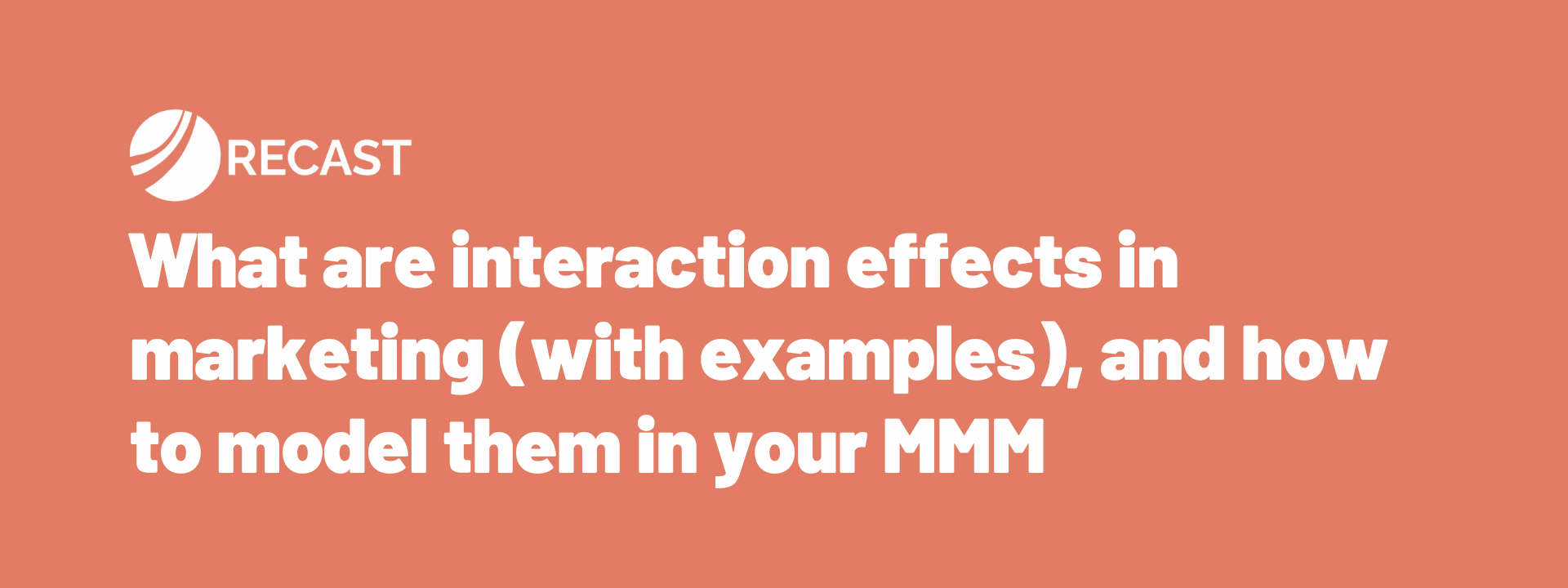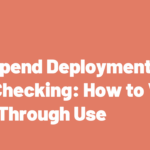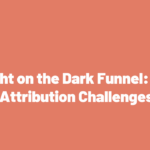If you’re doing media mix modeling in-house or through a vendor, being thoughtful about interaction effects will be key to making your model work. For context, interaction effects in marketing are when the performance of one channel (or, in general, our marketing effectiveness) is influenced by another variable (a different channel, or even outside events such as GDP, seasonality, etc.).
Interaction effects can be complex – we have to look at how things happen in the real world, and then think about how we capture and model them in our MMM. It’s really easy to mess these up and create some “this is obviously wrong but the model says so” results.
We’ve separated interaction effects between internal and external variables. Internal variables can be controlled by your company and your budget allocation; external variables you can’t control and only react to.
This article will cover the most common practical examples of interaction effects and how we think about modeling them here at Recast:
Interaction Effects For Internal Variables:
Offline channels → branded search
A really obvious one is between different marketing channels – especially offline channels such as TV, Radio, etc. – and branded search.
Say you’re watching the Super Bowl and you see an ad for a product that interests you. You Google the brand’s name on your phone and click on the first link (a paid ad) to go to the website.
Now, let’s look at this from the perspective of the brand – they invested in a large TV ad and on branded search. If they use last-touch attribution, that conversion will be attributed to branded search – but was it, truly? Is branded search incremental here? Or is the brand paying Google for a conversion that was going to happen anyway?
This is a clear interactive effect between an offline channel and branded search.
PS. Branded search might be incremental if a competitor would’ve targeted them and “stolen” that conversion – but the interaction effect is still there and it’s still worth testing and modeling.
Paid Social / Search → Retargeting
If a brand spends money on paid search or paid social, people come to their website, and then you retarget them with ads down the road, there will be interaction effects here between the different marketing channels.
Multi-touch attribution (MTA) will face challenges in accurately estimating the influence of initial paid social or search efforts due to the complexity of tracking multiple interactions over time. If you use a last-click model, it will overstate the effectiveness of retargeting campaigns by attributing the full conversion value to the final touchpoint, ignoring why we’re able to retarget in the first place.
Those are the types of interaction effects between marketing channels that we think about a lot. There are also other types of interaction effects with other external variables.
Interaction Effects For External Variables:
There are also other types of interaction effects with external variables. Here are a few examples:
Seasonality:
During the summer, if you have a brand that sells sunscreen, your marketing is going to be more effective in the summer when people care about sunscreen than it is going to be in the winter – so there’s an interaction effect there.
Competitor activity, GDP growth, inflation, economic sentiment, housing market…
There might be interaction effects between what happens out in the world and the effectiveness of your marketing, but different businesses will be impacted differently on them.
External and internal variables should be quite intuitive for marketers, but how should we model them in our MMM?
How Recast Models Interaction Effects:
At Recast, we model external variables and their interaction effects directly. We have designed a very flexible, time series model that doesn’t rely on having to control for every possible factor that impacts the business but can still generate helpful causal inferences. It learns how baseline sales and marketing performance change over time and doesn’t have one parameter that gets moved up or down based on what is controlled for.
For internal variables, you must also be very careful how you model them. If you want to estimate each variable and you’re guessing and estimating the quotients of their effect, you might inject a lot of bias into the model itself.
We spend a lot of time looking at the interaction effects that have been well-studied in the literature between top-of-funnel channels and bottom-of-funnel channels and model them directly.
What is important is that the model is capable of understanding these interaction effects depending on exactly how they’re modeled, and that whoever you’re working with to do the model can explain exactly how these are working and how the model is thinking about them. It’s really important to make sure that someone on your team understands exactly what’s being modeled and what’s not.
If, however, your modeler is throwing around words like “we control for _____”, that is a pretty big red flag. That, unfortunately, is not a good answer because there are ways that you can control for seasonality in which you are actually modeling the interaction effect. You’ll see some wild recommendations like you should market sunscreen in the winter – even though we all know that’s when your marketing is less effective.



